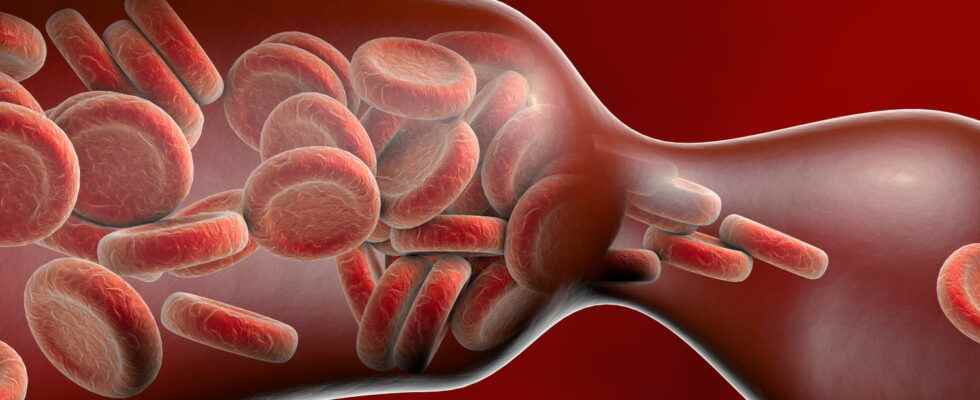It is a physiological mechanism by which the caliber of blood vessels decreases by contraction of the muscles of their wall. It participates in the normal process of blood circulation. However, several factors or diseases can also cause this phenomenon.
Definition: what is called vasoconstriction?
In the medical field, vasoconstriction refers to the natural process which consists in reducing the caliber of blood vessels thanks to the contraction of muscle fibers. “With the phenomenon of vasodilatationwhich is the reverse mechanism, vasoconstriction occurs within the framework of vasomotionexplains Dr. Jean-François Renucci. This phenomenon mainly concerns thesmall caliber arteries (arterioles). It occurs under the command of nerve impulses from the vasomotor centers, but also according to the amount of oxygen and bicarbonate in the blood, or even certain hormones“.
What are the types of vasoconstriction?
There are 3 kinds:
► The SVCR. Reversible cerebral vasoconstriction syndrome is rare. Rather, it concerns the women around 45 and is mainly manifested by a severe headache. “It is most often due to the consumption of substances such as cannabis, certain antidepressants, ENT vasoconstrictors… “, says Dr. Renucci.
► Hypoxic pulmonary vasoconstriction (HPV). “The lung is the only organ whose vessels contract in the event of hypoxia (decrease in the level of oxygen in the blood), because in all the other organs the response is vasodilation, says Dr. Renucci. In the lung, in case of poor ventilation of one part, the blood flow is preferentially directed to the well-ventilated areas“. This happens in certain situations: altitude hypoxia and focal lung lesions.
► Arterial vasoconstriction. The decrease in the caliber of an artery creates a poor “supply” of the organ concerned, therefore its poor functioning. Depending on its location, the symptoms are different. In certain situations, high blood pressure can cause cerebral vasoconstriction and stroke (cerebrovascular accident).
What causes vasoconstriction?
There are several factors triggering vasoconstriction:
- There muscle cell damage : this physiological mechanism helps, for example, to stop bleeding when a blood vessel is damaged, thus constituting the first phase of haemostasis.
- The production of certain hormones such as angiotensin II, adrenaline or even noradrenaline.
- THE coldto maintain body temperature
- THE stressvia the production of adrenaline
- There nicotine causes vasoconstriction of the arteries
- The taking of some medicationsin particular those intended to limit bleeding.
What is a vasoconstrictor effect?
“This is a phenomenon that mimics that of vasoconstriction: by narrowing the caliber of blood vesselsit has a decongestant effect“, says our expert. This is mainly used in case of a cold to decongest the nose, to stop the flow and promote better breathing.
Can the cold cause vasoconstriction?
Yes, when it is cold, the vessels located on the surface of the skin undergo vasoconstriction, that is to say a reduction in their diameter. “It is a normal reaction of the organism which thus ensures that a maximum of blood is supplied to the vital organs, what are the heart and the brain in particularexplains Dr. Nina Roos, dermatologist. This is the reason why, in winter, we frequently have cold hands but also feet.“. Among people the most fragile, this regulation system is far too reactive and pronounced: at the slightest peak of cold, the blood “deserts” the extremities. The fingers become white and painful (Raynaud’s syndrome, acrosyndrome, etc.).
What are the symptoms associated with vasoconstriction?
Vasoconstriction can be accompanied by various symptoms:
What to do in case of vasoconstriction?
It all depends on what caused it. When vasoconstriction is induced by nicotine, medication, or stress, its effects will wear off when the cause itself has disappeared. If it’s cold, engage in physical activity, perform massages at the level of the extremities and wearing protective clothing will allow the body to be warmed up. If caused by injury, vasoconstriction is necessary and will stop on its own when the wound is no longer bleeding.
Thanks to Dr. Jean-François Renucci, vascular doctor at the CHU de la Timone, in Marseille.
